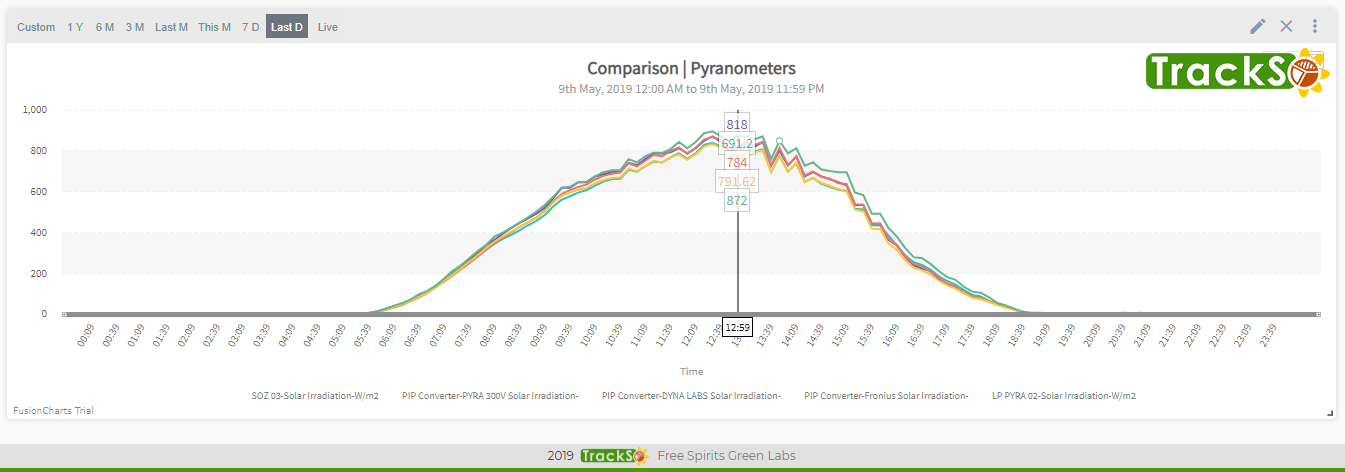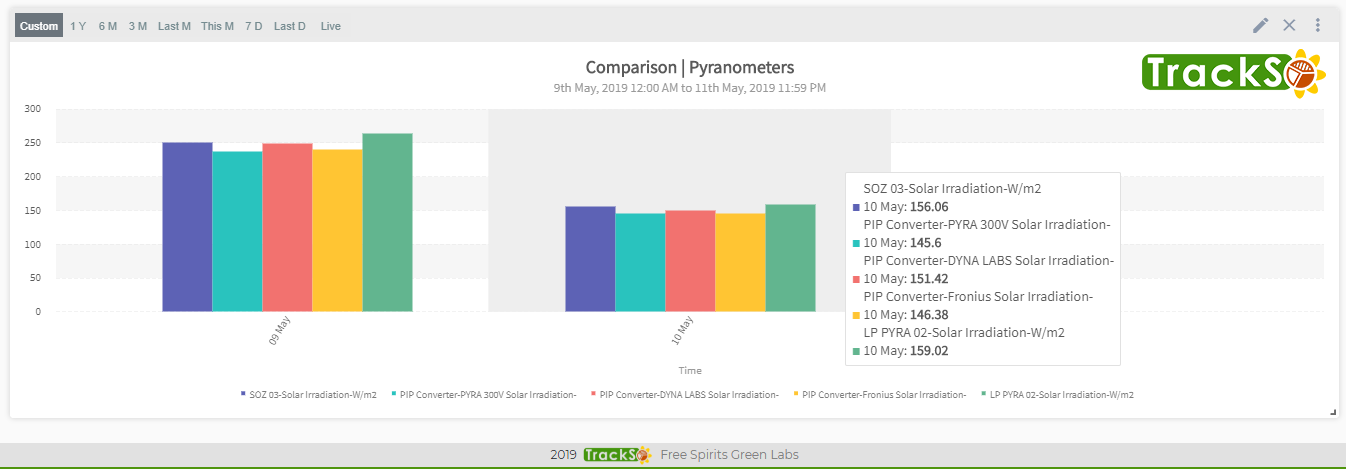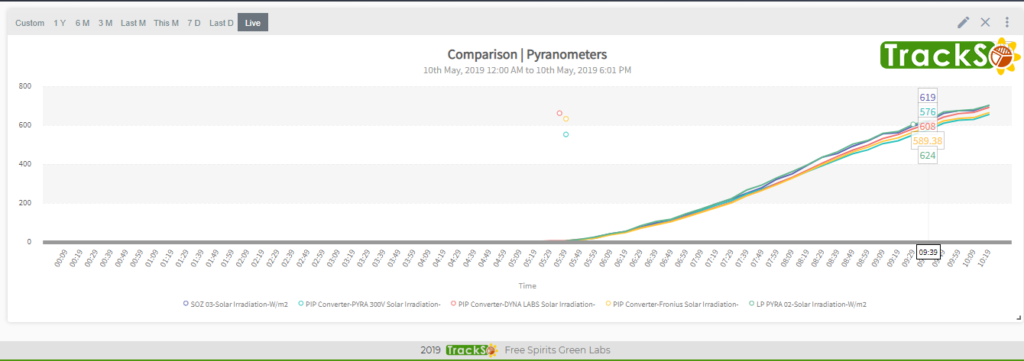Comparative Study | Solar Irradiation Sensors
While selling and gathering data from multiple brands and class of solar irradiation sensors in the Weather Stations for solar PV plants, we decided to guide our customers to analyse the performance of the sensor and use them depending on the use case. In this article we’ve shown a comparison [Live, 1 Day and 3 Days] for following solar irradiation sensors which were all installed on the same plane in order to get the right comparison and test results:
- PYRA 300V
- NES SOZ 03
- Fronius
- Dyna Labs
- Delta Ohm LP PYRA 02
As expected, LP PYRA 02 being a Class 1 sensor, gave the highest value almost 95% of the day. This is because this sensor do not deviate from actual and provide minimum error percentage during weather changes.
In the morning and evening time, when the weather conditions tend to add greater error percentage in the actual values, all the sensors seems to work pretty well. The Fronius sensor was giving almost 10% less value that the LP PYRA 02 sensor during that time, which is the least of the 5 sensors installed. But as the sun started to come up, at around 10 AM, PYRA 300V irradiation sensor moved down in values giving around 10% less value that the LP PYRA 02 and Fronius getting better and giving around 7% deflection from the Class 1 pyranometer.
As you can see in the chart above, LP PYRA 02, class 1 pyranometer has been consistently giving smooth and highest values of solar irradiation over the whole day. However, with a sudden change in weather conditions, PYRA 300V pyranometer gave the highest drop in values followed by Dyna Labs, Fronius and NES SOZ 03 with approximately 20%, 10% and 7% dip respectively in comparison with LP PYRA 02 pyranometer.

- LP PYRA 02 beats the other 4 sensors with clear difference.
- NES SOZ 03 bags the second place wiht not more than 3% variation in values as compared to LP PYRA 02.
- DYNA Labs pyranometer deviates about 5% from the class 1 pyranometer, taking the 3 place.
- Fronius and PYRA 300V pyranometer deliver equivalent results with less than 1% difference in values as compared to each other. However, as compared to class 1 pyranometer, the deviation is about 10% as mentioned earlier.

Cost vs Efficiency Analysis
The above figures clearly state the LP Pyra 02 as the most stable and efficient sensor. Also, this precision is evident from the fact that the sensor belongs to Class 1 category. Considering the above-mentioned fact, we chose LP Pyra 02 as the reference for the cost vs efficiency analysis for our case study.
| S No. | Sensor Name | Efficiency (%) * |
Cost |
| 1. | Delta Ohm LP PYRA 02 | 100 | ***** |
| 2. |
NES SOZ 03 |
98.13 | *** |
| 3. |
Dyna Labs |
95.22 |
* |
| 4. |
Fronius |
92.17 | |
| 5. |
PYRA 300V |
91.5 |
* Considering Delta Ohm LP PYRA 02 as the reference for comparison.
The above comparison clearly states that if the price of the sensor is not a constraint, Delta Ohm LP PYRA 02 is way ahead from the rest. A mid-ranged choice would be NES SOZ 03 sensor, showcasing the decent efficiency. At last, from the low-priced segment, Dyna Labs sensor out performs the other two (Fronius and PYRA 300V) in terms of price and efficiency.

